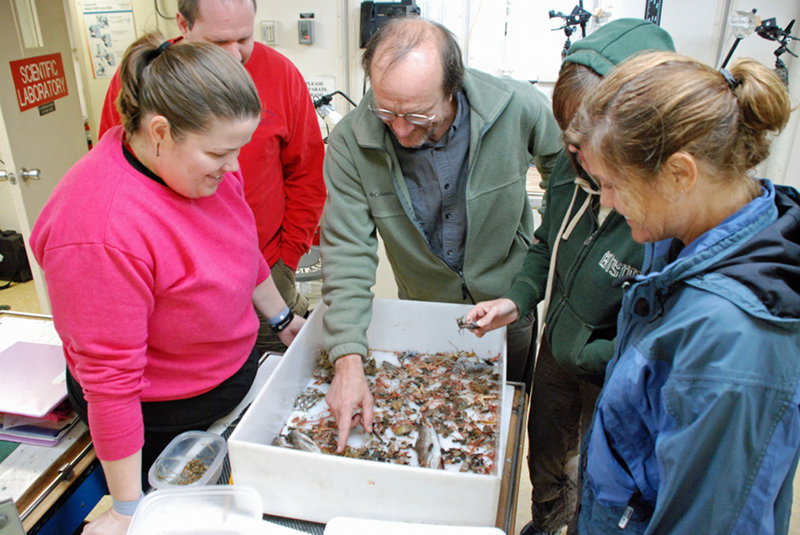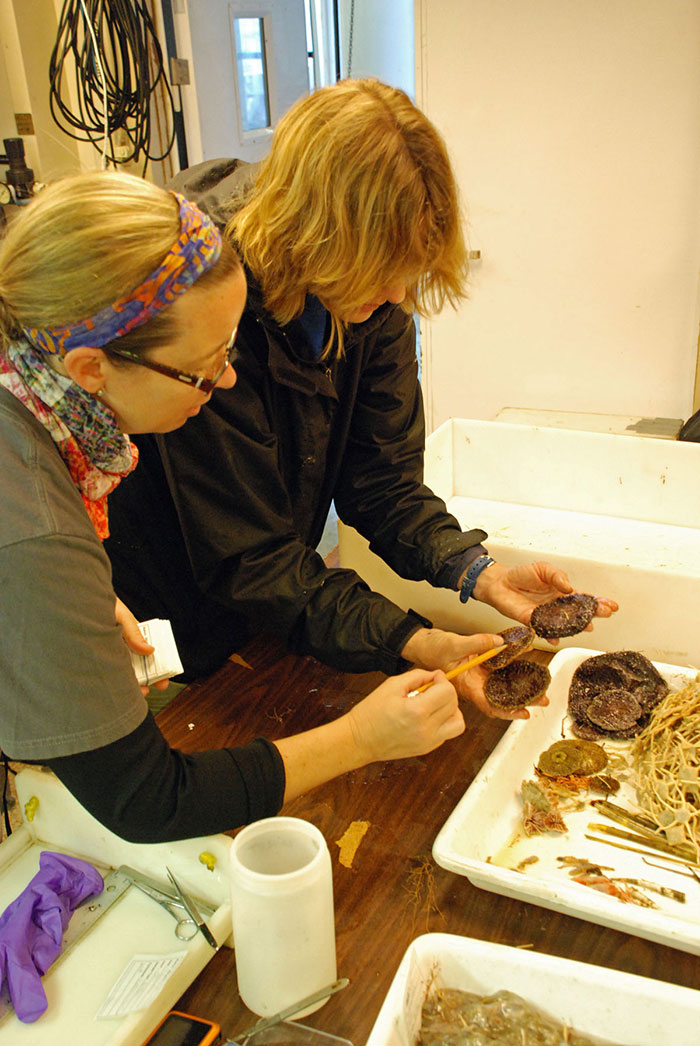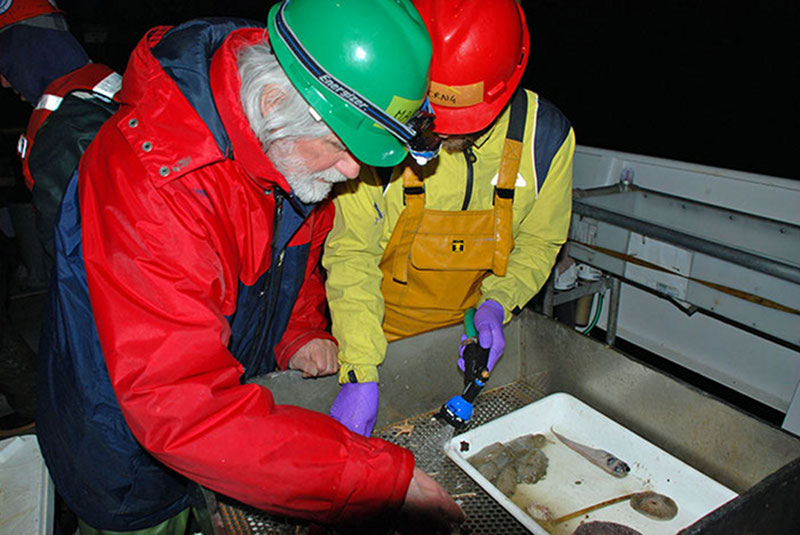
By Steve Ross, Research Professor - University of North Carolina-Wilmington, Center for Marine Science
May 10, 2013

Steve Ross (center) identifies species found in one of the initial trawls, while (clockwise from L) Esprit Saucier, John Tomczuk, Katharine Coykendall, and Cheryl Morrison look on. Image courtesy of Deepwater Canyons 2013 - Pathways to the Abyss, NOAA-OER/BOEM/USGS. Download larger version (jpg, 860 KB).
On this cruise, the remotely operated vehicle, Jason II, is our main science sampling tool; however, underwater vehicles cannot stay on the bottom indefinitely nor can they collect every type of sample needed. We use a variety of gear specific to different needs and many types of nets are included in our arsenal of sampling gear.
We are using a bottom otter trawl to collect fishes and invertebrates. This is a small net (16 feet wide) that is held open by water pressure on otter doors (rectangular wood boards weighted with steel). Most of this sampling takes place at night after ROV operations, but when the weather is too rough for the ROV, we trawl during the day in very deep water (+1,670 meters).

Amanda Demopoulos and Sandra Brooke examine pancake urchins (deep-sea relatives of sand dollars) brought up with the trawl. Image courtesy of Deepwater Canyons 2013 - Pathways to the Abyss, NOAA-OER/BOEM/USGS. Download larger version (jpg, 803 KB).
All of our tows last only 30 minutes, and this matches our data over the last 12 years, yielding a consistent data set for us to compare samples from the Gulf of Mexico to the mid-Atlantic. While the tows are short, the actual time to conduct deepwater tows can be long because the amount of wire we must let out is 2.5-3 times the water depth. At this moment, we have out 4,000 meters of wire; thus, this one tow will require five hours of vessel time.

Marc Lavaleye and Craig Robertson hose down samples to remove mud, prior to sorting by species. Image courtesy of Deepwater Canyons 2013 - Pathways to the Abyss, NOAA-OER/BOEM/USGS. Download larger version (jpg, 851 KB).
Despite this long time commitment, trawling can be very productive and can give us data not available from other methods. For example, this project has many objectives related to deep-sea corals. Our last two trawl samples from water depths around 1,600 meters yielded a number of solitary corals and most of these came up alive. These samples would have been hard to find with the ROV or other gear, and they will be used by our genetics team and the coral biologist for our trophic objectives and for distributional data.
The trawl also gave us several species of invertebrates and fishes not yet seen on the cruise. These are used for several purposes (feeding studies, reproduction biology, ecology). All data are useful and fit together to give us a better understanding of this poorly known ecosystem.
While trawls produce a lot of seafood that is sold, and as noted above, can be valuable for science, they can also cause damage to bottom habitats. We have seen lost trawl nets in these canyons wrapped around rocks and corals. In addition, large commercial trawls catch a lot of animals that are not used, are discarded dead, and are thus wasted. Fishermen do not want to lose their gear and many are very concerned about conservation.
Technological improvements (better bottom maps, better navigation, sensors on nets) are allowing trawling to become more efficient and less damaging; future improvements will continue to help these valuable fisheries.